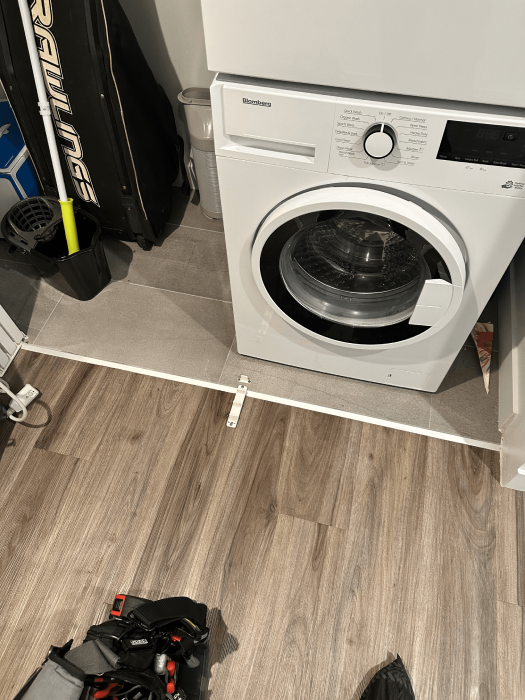Modern washing machines are much more advanced than we think. They have a lot of features that make everything super easy. If your appliance is facing problems, they, now, come with diagnostic systems that can help you out and make the whole washing machine troubleshooting super simple. This is news that would make DIY lovers very happy! To know more about this, we are bringing you a blog that will help you understand how to access and interpret these diagnostic features. With our help, you will be able to know your machine’s diagnostic mode all the way, save time, and money and avoid unnecessary service calls.
Understanding Diagnostic Mode
The diagnostic modes in washing machines are like computers with mechanical parts. They have a very detailed system that continuously monitors different operations, from water temperature to spin speed. This diagnostic mode is like a window into this monitoring system that allows access to information about your machine’s health and performance.
The mode runs a series of automated checks on important parts. These tests evaluate everything from the water valves’ responsiveness to the motor’s rotation patterns and provide a bigger picture of the machine’s operational status.
The whole system works with the help of a network of sensors strategically placed throughout the washing machine. They collect data during normal operation and are activated during diagnostic testing. For example, pressure sensors monitor water levels, temperature ones track water heating, and so on. When the diagnostic mode is activated, these sensors repair their findings through the machine’s display panel or with the help of specific lights and sounds.
Related: How Often Should You Clean Your Dishwasher Filter and Why?
The Technical Side of Diagnostics
Do you know what happens behind the scenes? Your washing machine’s diagnostic mode actually works on a few key principles:
Real-Time Monitoring: The machine’s control board constantly receives data from different sensors. During diagnostic mode, this data collection becomes more focused and detailed, allowing for accurate problem identification.
Sequential Testing: Rather than running all tests at the same time, diagnostic mode usually progresses through a series of specific checks. This systematic approach helps to isolate the issues and avoid false readings that might occur if all systems were tested all at once.
Data Interpretation: The machine’s processor converts raw sensor data into meaningful information. What looks like a simple voltage reading from a sensor can be translated into user-friendly error codes or status indicators.
Related: A Beginner’s Guide to Measuring Thermistor Resistance in Appliances
Accessing Diagnostic Mode
Different manufacturers implement their diagnostic modes differently. But most of them follow the same or similar principles. Here’s what you need to know about accessing this feature:
Common Access Methods
The most common method involves pressing specific button combinations while turning on the machine. For example:
- Samsung machines usually need to hold the ‘Temp’ and ‘Spin’ buttons at the same time.
- LG models often use a combination of ‘Temperature’ and ‘Signal’ buttons.
- Whirlpool machines might need to rotate the cycle selector knob in a specific pattern.
Before accessing the diagnostic mode, make sure that the washing machine is plugged in and completely powered off. This will help you avoid any running cycles from interfering with the whole process.
Reading and Understanding Error Codes
Once you enter the diagnostic mode, the machine communicates through error codes displayed on the control panel. These codes follow manufacturer-specific patterns:
Error Code Structure
Most of the error codes have letters and numbers that indicate specific issues:
- The first character usually represents the affected system (E for electronic, F for flow, etc.)
- Following numbers provide more detailed information about the specific problem.
- Some of the machines use blinking patterns on LED displays to communicate errors.
For example, an ‘E1’ code might show a water intake problem, while ‘F3’ could signal a drain pump malfunction. Keep your washing machine’s manual handy for reference, because the code meanings can be different between manufacturers.
Related: Understanding Wi-Fi Error Codes in Smart Home Appliances
Common Tests in Diagnostic Mode
During diagnostic mode, your washing machine can do several important tests like:
Water System Tests
The machine checks water inlet valves, drain pumps, and pressure sensors. Make sure to listen to the sound of water entering the drum and draining properly. Any unusual sounds or incomplete filling/ draining could indicate problems.
Motor and Spin Tests
The drum motor has to go under different rotation tests at various speeds. You have to pay attention to:
- Smooth acceleration and deceleration
- Unusual noises during spinning
- Vibrations or movement patterns
Control System Checks
Button functionality, display elements, and electronic control systems receive verification. Watch for:
- Clear display readings
- Proper button response
- Correct cycle progression
Taking Action Based on Results
Once your washing machine is done running all the diagnostics, you will need to interpret the results and take the right action:
Minor Issues
Some of the problems have simple solutions that you can easily handle by yourself:
- Clearing blocked filters
- Checking and securing loose connections
- Cleaning drainage systems
Major Problems
There can be times when some problems need to be handled by professional attention:
- Motor replacement needs
- Electronic control board failures
- Drum bearing problems
Preventive Maintenance Through Diagnostics
Regular diagnostic checks can act as preventive maintenance tools. You should think about running diagnostics:
- Every three months for heavily used machines
- When performance changes become noticeable
- After any repair work
- Before and after moving the machine
This approach helps in maintaining ideal performance as well as extends your washing machine’s lifespan.
Related: How to Safely Use a Household Trash Compactor
Safety Considerations
It is true that diagnostic mode is a powerful tool and it is important to use it with safety.
Important Precautions
- Make sure the machine is empty before running diagnostics.
- Keep children and pets away during testing.
- Never force buttons or controls.
- Document all error codes and symptoms.
- Disconnect power before attempting any internal inspections.
When to Call a Professional
While diagnostic modes are very helpful in identifying problems, some of the situations need expert intervention:
- Multiple error codes appear at the same time.
- Continuous issues despite basic washing machine troubleshooting.
- Electrical problems or burning smells.
- Unusual sounds or vibrations that don’t resolve.
Conclusion
Washing machine troubleshooting has changed significantly with the help of diagnostic mode technology. This sophisticated feature transforms all complex problems into a very systematic process that is easy for everybody. With the help of this mode, users can directly understand their machine’s health without the help of the middleman, or technician. Because of this, modern washing machine troubleshooting has shifted from repairs to preventive maintenance. So, understanding and regularly using diagnostic mode will actually help you and your appliance. If something goes wrong, you can easily DIY it up, or if it gets serious, simply call Barton Appliance Repair to give you the right kind of help!





